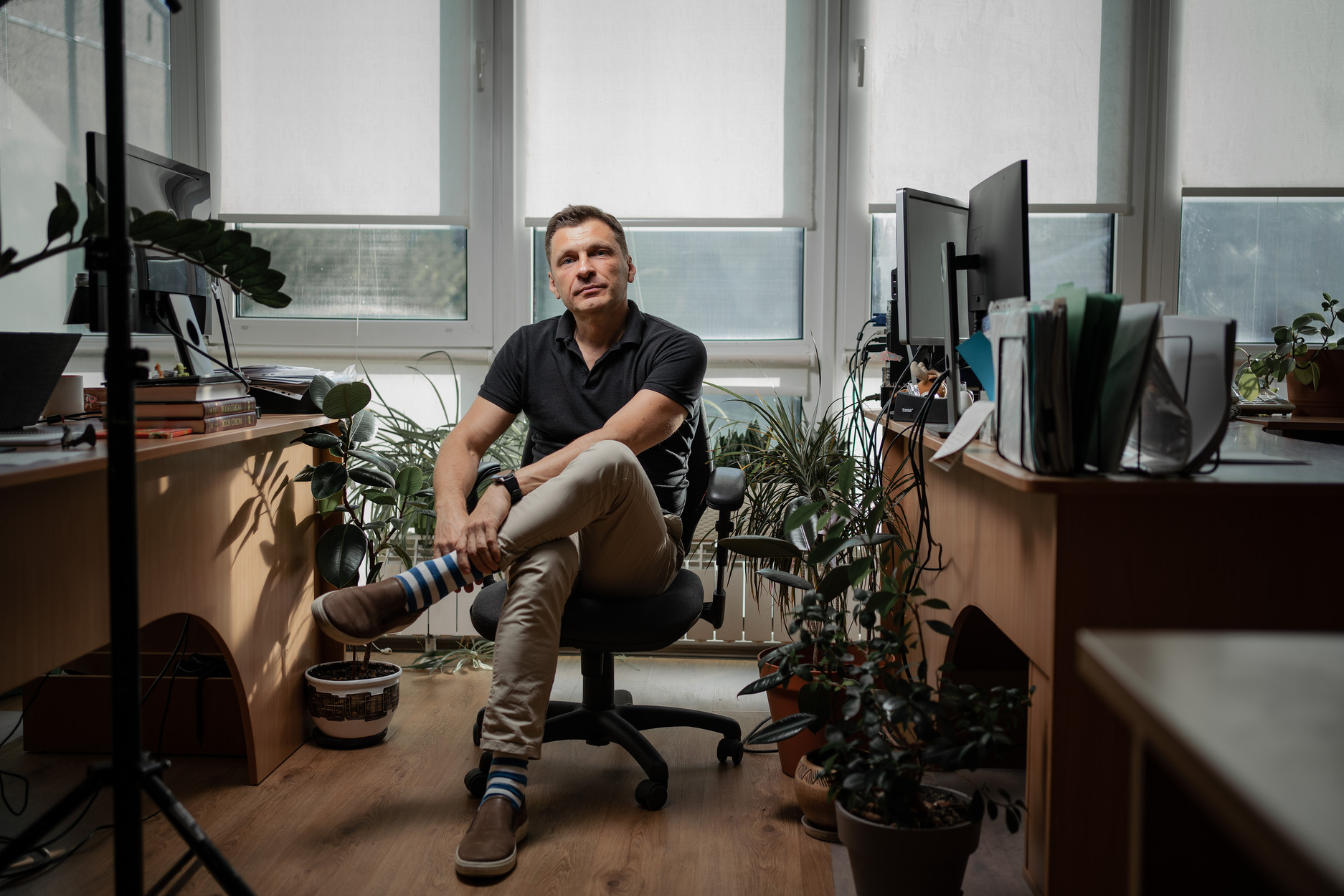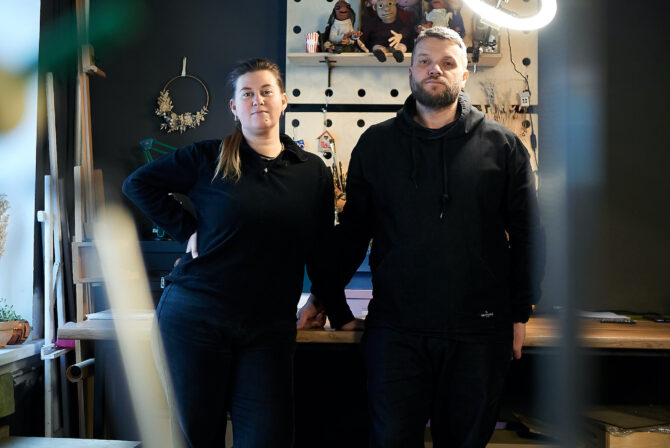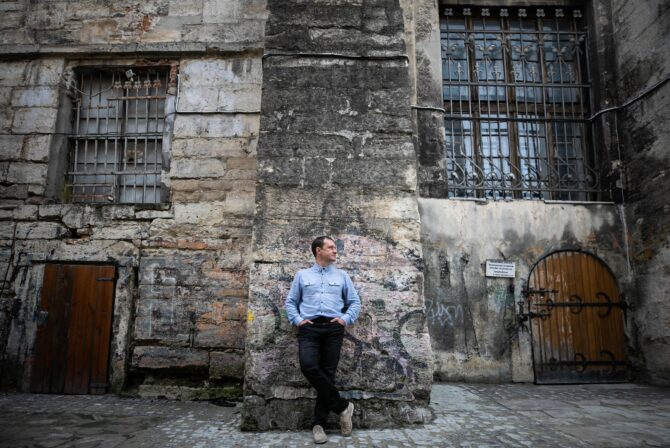A conversation with the head of one of the largest foundations of Ukraine
about the role the public sector should take in the country’s development and how Diia has become a tool of Ukrainian diplomacy.
§§§
[This material was created in partnership with East Europe Foundation]
§§§
What does East Europe Foundation do and how did it become what it is today?
The Eurasia Foundation has been active in Ukraine since the beginning of the 1990’s, investing significant resources in the development of small and medium-sized businesses, as well as in communities and public organizations. For 15 years, employees of the Eurasia Foundation felt that the Ukrainian team had the skills and knowledge to develop as an independent Ukrainian organization.
That was when East Europe Foundation was created. Its idea was to prove that Ukrainian organizations can implement high-impact socio-economic, ecological, and cultural development projects in line with the best international standards. We are registered as a charity, but I would say that we are more like a development organization
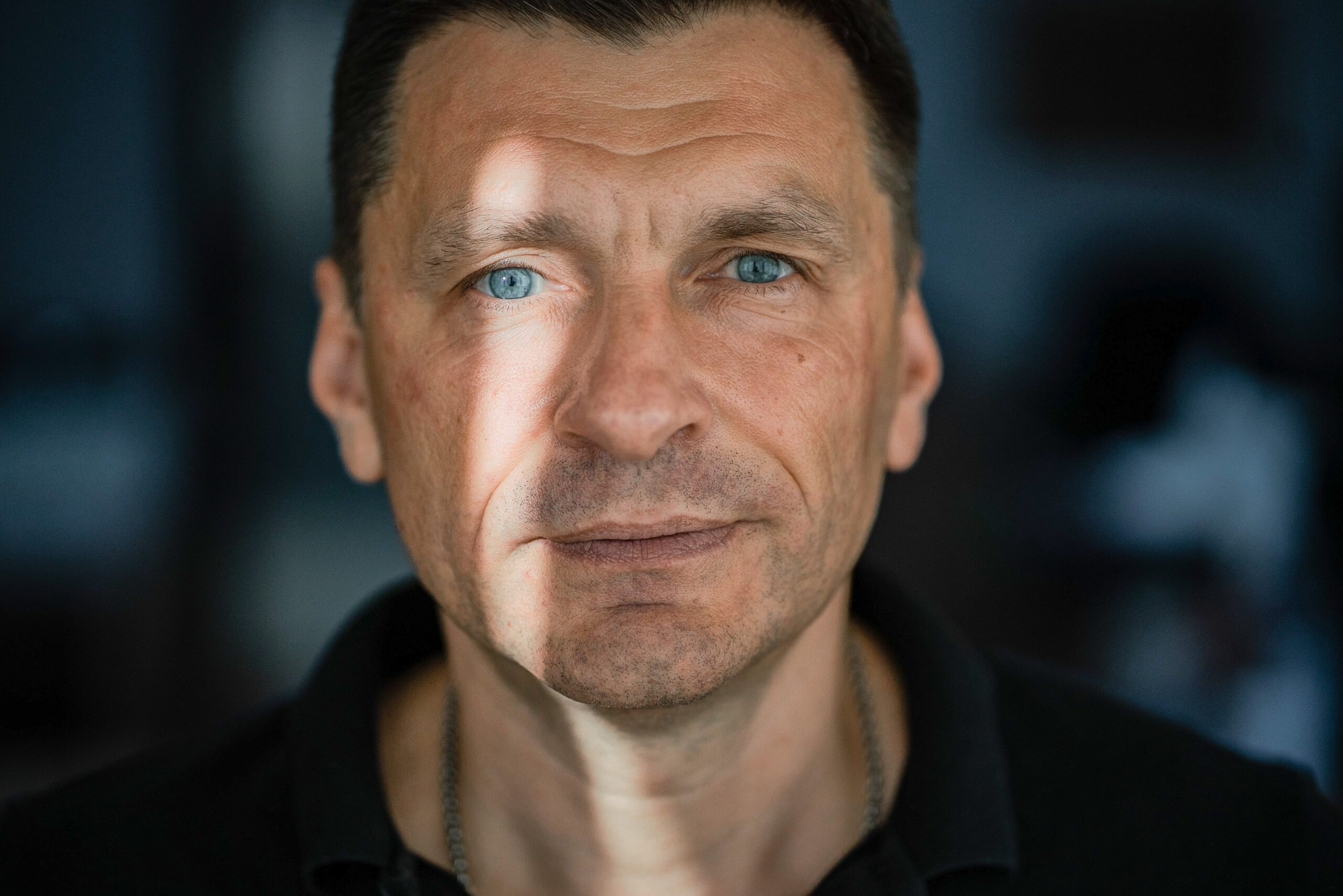
What is the difference between a charity and a development organization?
I associate charity and philanthropy with direct assistance to end consumers.
Whilst we are, by nature, closer to social engineers. We are building a model that will run without us when we are gone.
Probably the best example is the energy efficiency projects that we were working on before the full-scale invasion and continue to work on now. The same practice was carried over to the provision of shelters in schools.
Our idea is as follows: when we redevelop, say, Lviv Regional Children’s Hospital “OKHMATDYT” or a kindergarten, we present all the possible energy efficiency technologies that can be used there. We create stable models.
In addition, we train mayors of other cities to implement the same energy-saving projects. We train the staff of these facilities on how to manage energy efficiency. We calculate not only the economic effect, but also the environmental and social impact. We show that we are doing things the right way, and bring it to the level of regional or national policy. So when we complete our projects, children continue to go to a warm and comfortable kindergarten and get sick less, the city spends less money on heating, and the energy modernization initiatives are taken up by other cities.
So to be more concise, the foundation provides training, gives money, helps
organize?..
All of that. We try to get to the root of a problem and solve it so that a community, public organization or target audience does not have to depend on the charitable organizations and benefactors who support it. So we are interested in finding a sustainable solution to the problem.

Are there any particular areas in which the foundation works?
Globally today, our work is focused on three areas. The first is the development of a strong and capable civil society. The second is a response to the challenges of war, i.e. we have a civilian security program. The third is effective governance. We help the authorities implement permanent changes that help citizens and businesses.
What is it all about?
It is all related to digitalization. Electronic services and maintenance, e-democracy tools, the development of registers and their interconnectivity, open data, digital education of citizens… For example, you definitely use Diia. East Europe Foundation is proud to be one of the key partners of the Ministry of Digital Transformation and is involved in this success story.
What was your participation?
Under our EGAP program, we supported the development of the Diia portal and mobile app, providing financial, expert and administrative assistance. Our experts, in cooperation with employees of the Ministry of Digital Transformation, have developed more than 60 government services. We also financed the Diia media campaign.
Behind the scenes, our lawyers worked to prepare amendments to the legal framework, so that all these electronic services could be simplified, digitized and made available in the convenient form that more than 20 million Ukrainians now benefit from.
So we can say that we are innovative philanthropists. We show that charities can do more than just provide social assistance.
How do you build relations with the state?
Of course, we do not take a single approach. We try to be as flexible as we need to attain the desired results.
We started this story back in 2010, when we tried to post information on the procedure for obtaining certain services at the level of local communities or local municipalities. We then created a system of electronic queues. Later, these programs were gradually scaled up to the national level.
Before the Ministry of Digital Transformation was created, we worked with the State Agency for e-Governance. It was then that the first administrative service centres (ASC or TsNAP) were created and the first e-services were launched, such as assistance accessing maternity benefits or construction services.
You were on the website of the Cabinet of Ministers, right?
Yes, and more than once.
This is our job too. It’s not just about a cool website design, it’s about the human-centric presentation of information. For this purpose, we analyzed all the relevant websites of other countries. Then we proposed a design code for the state’s information resources.
It would have been difficult to engage in such a joint creative endeavor without the involvement of the public. On the other hand, it would probably be difficult for the government to organize such feedback, conduct focus groups, and the likes.
Why so? Isn’t it their job to do that?
Much of what we do could be done by an effective government. But no government
can organize constant feedback from citizens. It cannot form an active social and
civic position. To this end, there are public organizations that promote development
because they are catalysts for change.
I remember how back in 2014–2015, conversations started that you can sometimes hear to this day: on the one hand, Ukraine is deservedly proud of its civil society, but on the other hand, this creates risks that, since public organizations “takeover” the functions of the state, the state begins to abandon some of its responsibilities. Do you not feel this risk in your work? You do so many important things, and this means the authorities can relax.
The question here is what the government should do in general. You know, in Great Britain there is a popular concept that the government should do less, that tasks should be shared, meaning that resources allocated to the social sphere can be used by public organizations, social enterprises, and private organizations. But since February 2022, we have realized that we need full consolidation if we are to achieve the results we are looking for.
I suppose the position of civil society is to fight against paternalism.
I think it’s good when the public sector plays an increasingly important role in the development of the state. The public sector not only needs resources, it brings resources to Ukraine. These are not only financial, but also intellectual resources of civic engagement and social activism. We are talking about significant resources that give a huge impetus to the country’s development.
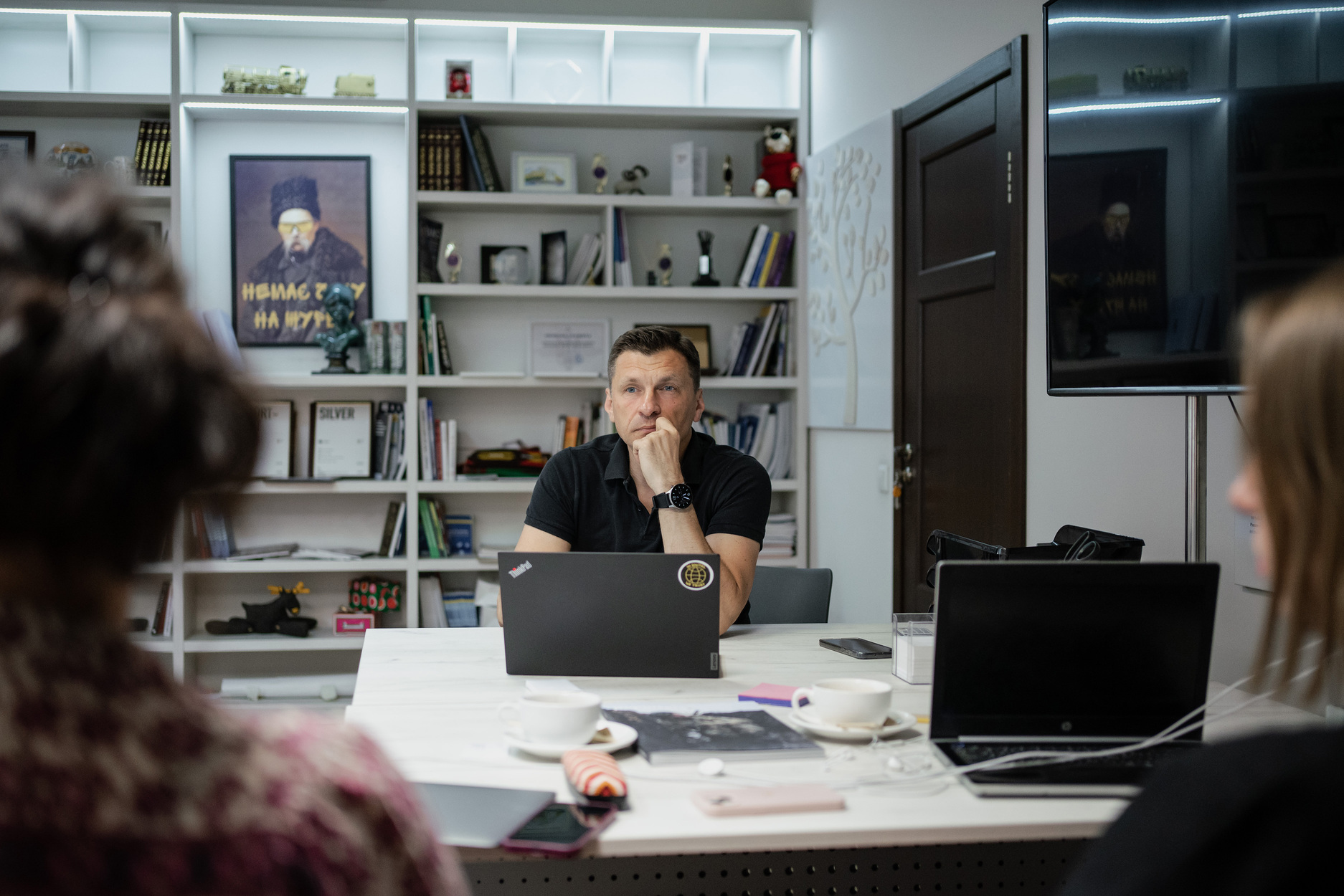
The way I see it, the challenge for the public sector will be to avoid regressing from the desire “to play an ever-increasing role in the development of the state” to “we’d better do it all ourselves”. How can you best build this engagement, and not take on everything with the thought that “we’d better do it all ourselves”?
We want to make sure that the government, state and civil society coordinate their work and work together as best as possible to develop the country. I will explain: no electronic system will work without public participation. That is, it will become a system for the system, not for citizens.
Ukrainians did not trust the government for many years. The further we were from the state, the better. Until 2014, the IT sector was developing only because it was out of the government’s sight. The authorities focused on regulating all other sectors, while Ukrainians tried to distance themselves from the state as much as possible. They would say, give me transparent rules, I’m ready to pay my taxes, but leave me alone. But this is also not a very normal position, when a person does not feel involved in the issues of the state, except for its elections; when they do not participate in community life. East Europe Foundation is working to build trust between the authorities and citizens through our tools: electronic services, open data, a system for obtaining grants for public organizations
Regarding the work of the foundation today, what has changed since last
February? Perhaps new priorities have emerged?
We all felt that everyone in the country is now a volunteer. Everyone took action, collected something, donated, helped, gave shelter. This was a huge step forward for our civil society. It showed that it is the basis of the state’s reactions to all problems. Just imagine if on February 24, 2022, public organizations and volunteers did not exist and everything had been entrusted to the state…
As a foundation, we have changed our work: we launched the Shelter program, which brings humanitarian aid to Ukraine and supports shelters. We are talking about 275 tons of humanitarian cargo. In the first weeks, when a million people were leaving a day, we supported a center for psychological assistance for IDPs at the Lviv railway station and later helped to equip 65 shelters in 14 regions.
We launched the Safe School program, creating shelters in educational institutions. And of course, we provide education to Ukrainians on the new skills that are needed here and now: mine safety, how to talk to children about the war, how to take children to shelter during air-raid sirens, how leaders of public organizations can maintain resilience and emotional stability. We developed a number of such courses and posted them on the Zrozumilo! platform.
We have a board of directors, which we meet twice a year. Once, I think in 2014, Oleksiy Kredisov said: “In times of change, do what you do best”.
What do we do best? We have a fantastic network of partners in the public, government and business sectors. We can quickly mobilize and allocate resources. We know how to work on education, including digital education.
I think that the Safe School is one of the best things we have done since the beginning of the war. After the shelling of Vinnytsia, it was the first serious shelling of the center of Ukraine, we brought together donors and partners and told them about the idea of rebuilding shelters in schools. Shelter is not only about safety. Schools do not work if there is no shelter. During online learning, one parent stays with the child, and when they stay, they also compete for the device.
We compiled the findings of the State Emergency Service and the Ministry of Education and Science and assessed the needs of children. We heard what children need to be more or less comfortable in shelters. The State Emergency Service emphasized safety. There are no Ministry of Education and Science requirements for shelters, so we chose them at will. We wanted the children not only to sit at desks, but also to be able to lie down or move to beanbags. We wanted there to be routers and colored walls.
We raised money for this project from other organizations, charitable foundations, and the private sector. We did not take money from the state, we did not even have any need for technical assistance programs. In just four months, we equipped 28 shelters and created 3 model shelters. A year ago, there was no expertise on the creation of shelters, so we took an ordinary high school in Kyiv, a typical kindergarten in Chernihiv, and a center for children and youth creativity in Khmelnytskyi. We built shelters there, which became models for other cities.
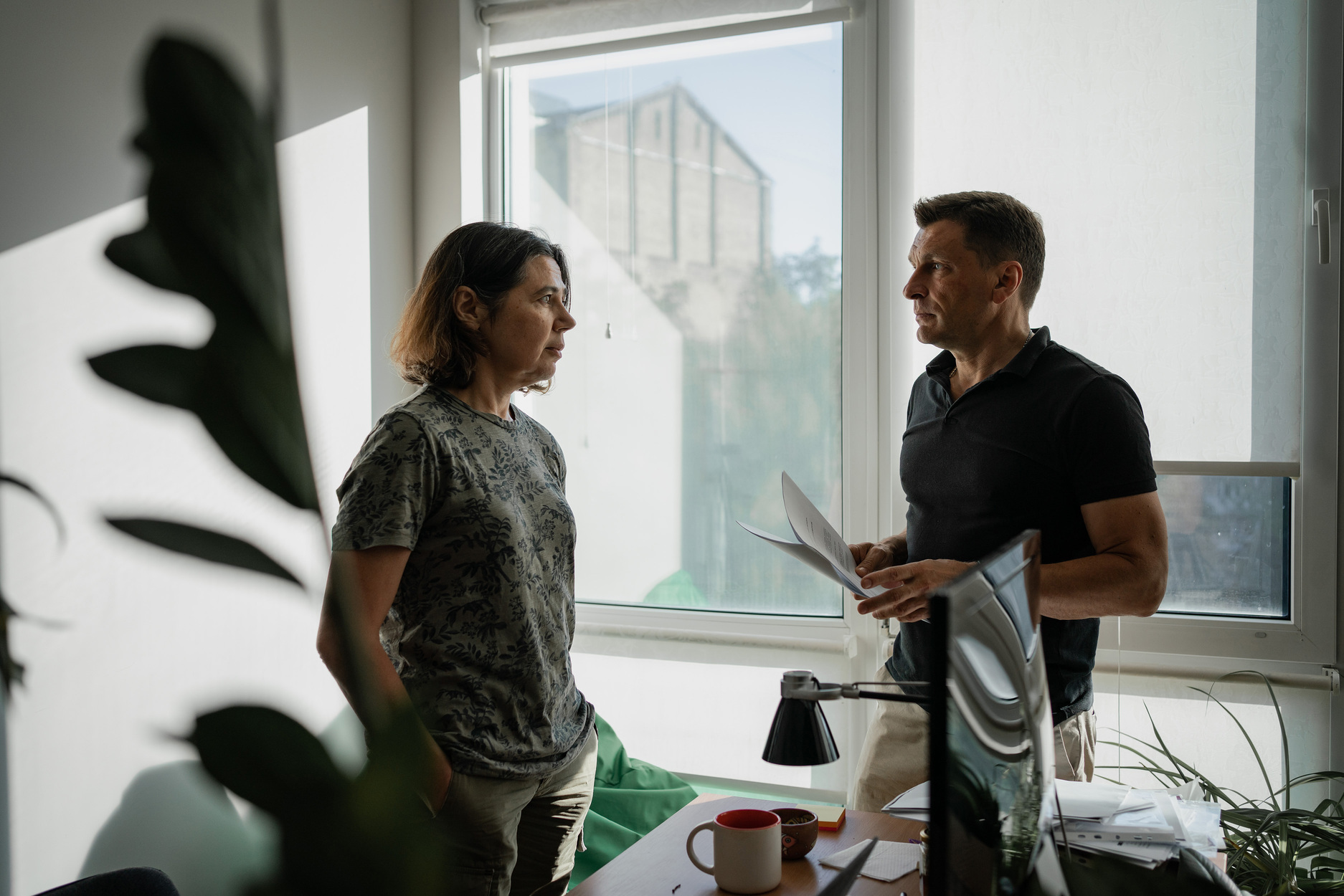
As every year, we issued grants to public organizations. But this time, many of their projects were related to supporting IDPs or relocating public organizations and setting up in a new location. Under the Stiykist program, we supported 15 such public organizations. They include an organization from Kramatorsk that moved to Khmelnytskyi, settled there and continued its work.
Another priority was to support communities in overcoming the challenges of war. In particular, the adaptation and integration of internally displaced persons. According to various estimates, since the invasion began, about four million Ukrainians have found a home in new communities. Both they and the local authorities have many new concerns. So we brought together community representatives who work with IDPs, taught them how to identify the needs of new residents, benefit from local development programs, explained what grants are, how to “bring” them into the community, and much more.
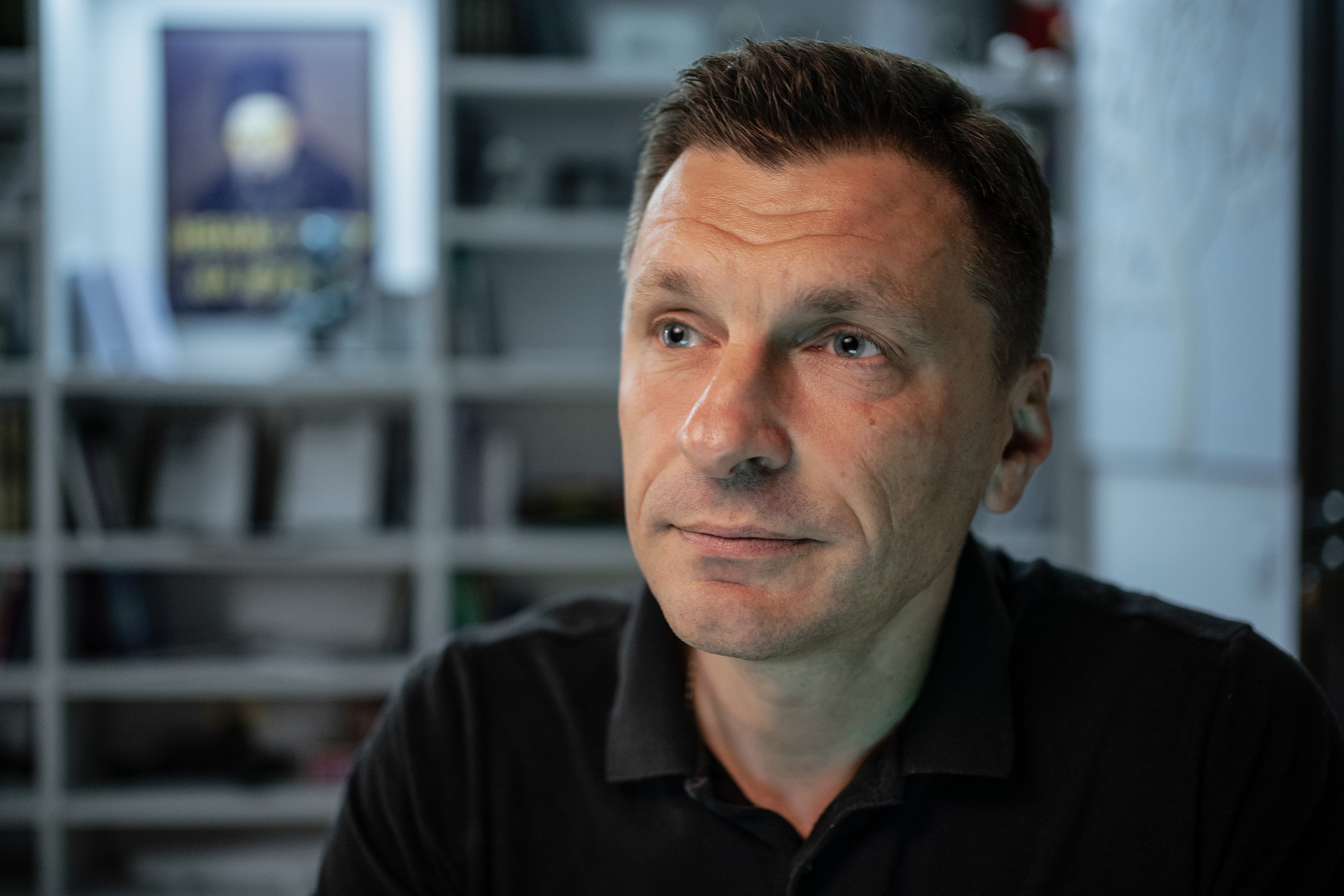
You work a lot with fundraising from other organizations, foundations, governmental and non-governmental organizations. Your projects are targeted at civilians. Do you work with the military? Are there any challenges in communicating with Western donors when it comes to explaining why it is necessary to teach mine safety to children?
Civilian safety includes mine safety and skills in dealing with all possible threats, such as nuclear, and chemical. We do this in tandem with the State Emergency Service.
For us, the limit is if it is a weapon. We can’t talk about weapons. We are a humanitarian foundation. Each of us, of course, helps the army as we can, but as a foundation, we help those people who have left the war zone and do not hold weapons.
And the issue of mine safety will be with us for a long time, for decades. This concerns 15% of our territory. And it is an immediate risk to the two to three million people who live there.
In cooperation with the State Emergency Service, we developed an electronic platform for demining in Ukraine. We created an e-course on mine safety, and got famous people to promote it. We created a 3-day offline course for community leaders, such as district police inspectors and foresters, teaching them about mine laying and how to recognize that an area is mined. The results are impressive, and I think we’ve saved hundreds of lives.
It is much more difficult for the State Emergency Service to work with schoolchildren, for example, because they are engaged in physical demining, not education. We created a course based on Minecraft, and 30,000 children completed it in the first two months.
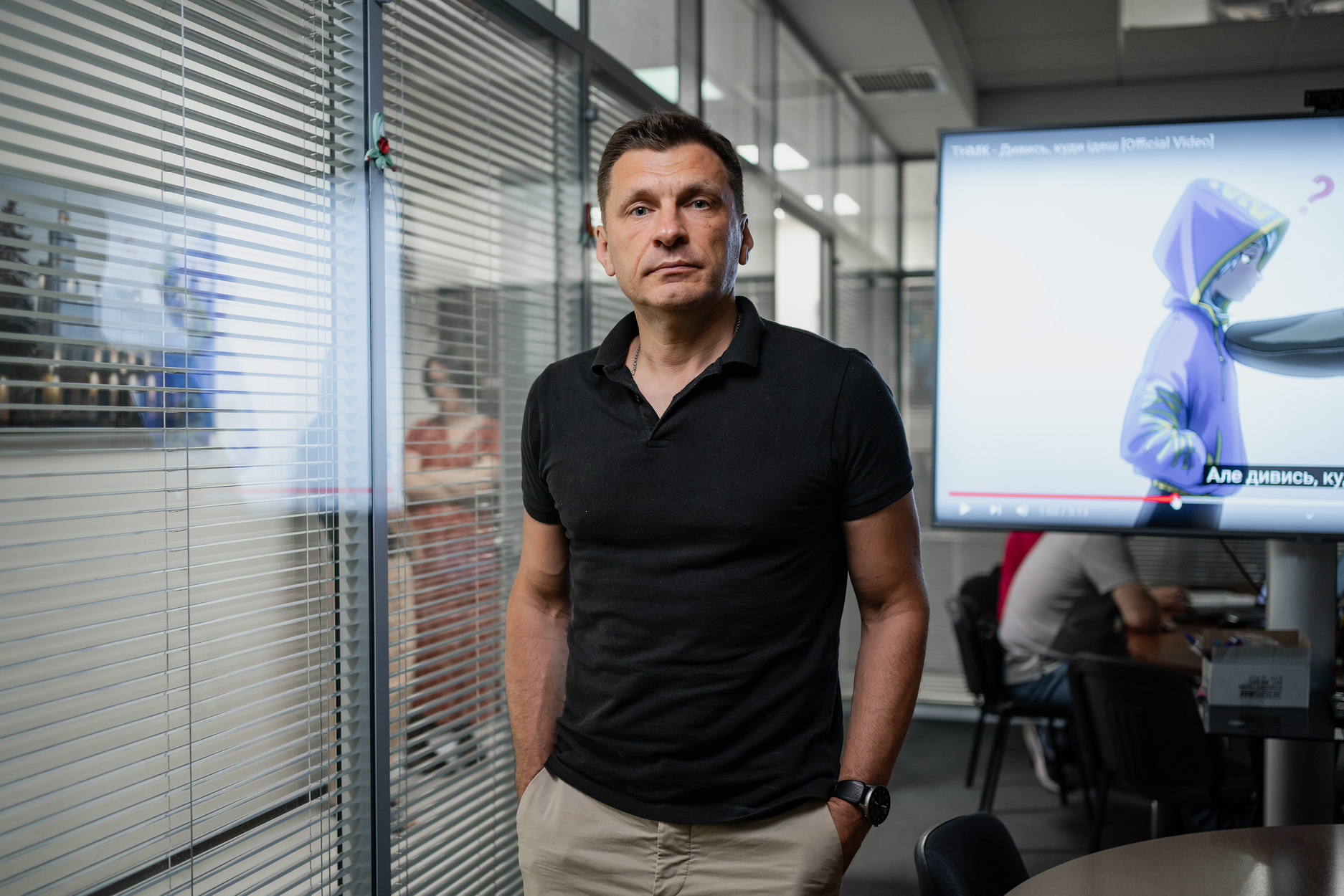
What new projects do you think are in store for your foundation? We have already done shelters and demining. So what comes next?
We are looking two or three years ahead. I think that the first challenge will be reconstruction. We want reconstruction to be planned with the constant involvement of citizens through electronic documents and open data analysis.
A typical case is a small town somewhere in the de-occupied territories. We are well aware that not everyone will return. The population may fall by 20–30%. The economic profile of the community will change, because there will be fewer opportunities for economic development. Accordingly, the reconstruction of what stood before February 2022 may not be relevant, and on this, the citizens will have their say.
We see ourselves as people who use digital democracy tools: electronic petitions, electronic consultations, participatory budgeting, open data. To not only rebuild what we had before, but to build a new, better country.
The second challenge is the huge number of returning veterans. This is a subject on which we have been working for a long time. We will need to focus on reintegration into society, combating stigmatization, and providing jobs.
I think that with each year that passes, trust in the public sector will be higher. Ideally, we want the public sector to have the same capacity to provide services as the state or commercial organizations. To make it a modern market of social services.
We also really want the technologies we have developed to work in other countries. The government of the country where Diia is implemented will be more sympathetic to us. This means that Diia can be a tool of Ukrainian diplomacy.
How did you get into all this?
I studied (don’t laugh) aerospace systems management at Igor Sikorsky Kyiv Polytechnic Institute. All the men in my family were engineers, mostly in agriculture. Escaping this bubble was already a big step for me. “The first cosmonaut in the family”.
But I didn’t want to be an engineer, because my vocation is social work. By the 5th year, I was already working in social services for young people and, since I knew English, I began to study Western social work practices. I learned new ways of doing things and forged new relationships. I started working with UNICEF.
I think it was not only my communication skills that came in handy here, but also my ability to analyze a phenomenon as a system, to divide it into parts and functions. This is what engineers are taught. This made it possible to model processes, including social processes.
I then went on to study in Germany, in Denmark, and in the United States. I’m now working on my third degree, and I’m trying to constantly improve.
My life path is at the intersection of public activities and international organizations.
But sometimes the engineer in me wins: it is important for a person to see the result of his work, and for social workers, this is not very easy to do. I want to build something, and here it is.
Have you heard about Zhovkva? In this city of 13,000 people, we renovated a kindergarten and implemented several energy-saving projects. We installed boilers that use wood chips instead of gas. Thanks to this, gas consumption was reduced to 45%.
This year, the Zagoriy Foundation conducted a study of the charity sector, which showed supposedly obvious figures that need to be discussed: a third of people involved in the charity sector experience burnout; another third feel that they are close to burnout. That’s a lot. Do you, as the head of a foundation, think about this? Do you have ways to help protect your colleagues and employees from this phenomenon?
If I were an entrepreneur, I would set up a psychological rehabilitation clinic for public sector workers and a health resort.
But seriously?
I think that the leaders of public organizations have to cope with a triple burden, emotional and psychological. First, they worry about themselves, their relatives and their friends. Second, they care about the colleagues they work with. Third, they care about the community they work with. This is an incredible emotional burden. I remember when we launched the Shelter program, we tried to raise money from wherever we could. Life was split between sleep and work, work and sleep. But we got through it.
Our previous experience came in handy. Back in 2017, we had a long-term program for work with veterans, during which we developed a model of psychological coaching. During COVID-19, we also taught coaching to leaders of public organizations.
People in the public sector, working themselves to death, burnout. The downside is that we become toxic.
A toxic person does not contribute to the internal climate of an organization, the organization experiences an internal crisis and falls apart. For the sector as a whole, this is not good. Understanding the importance of this issue, we add psychological practices to our various programs.
And even though we don’t always succeed, at the foundation we try to create opportunities to recover or make it easier to survive crises related to blackouts and the likes.
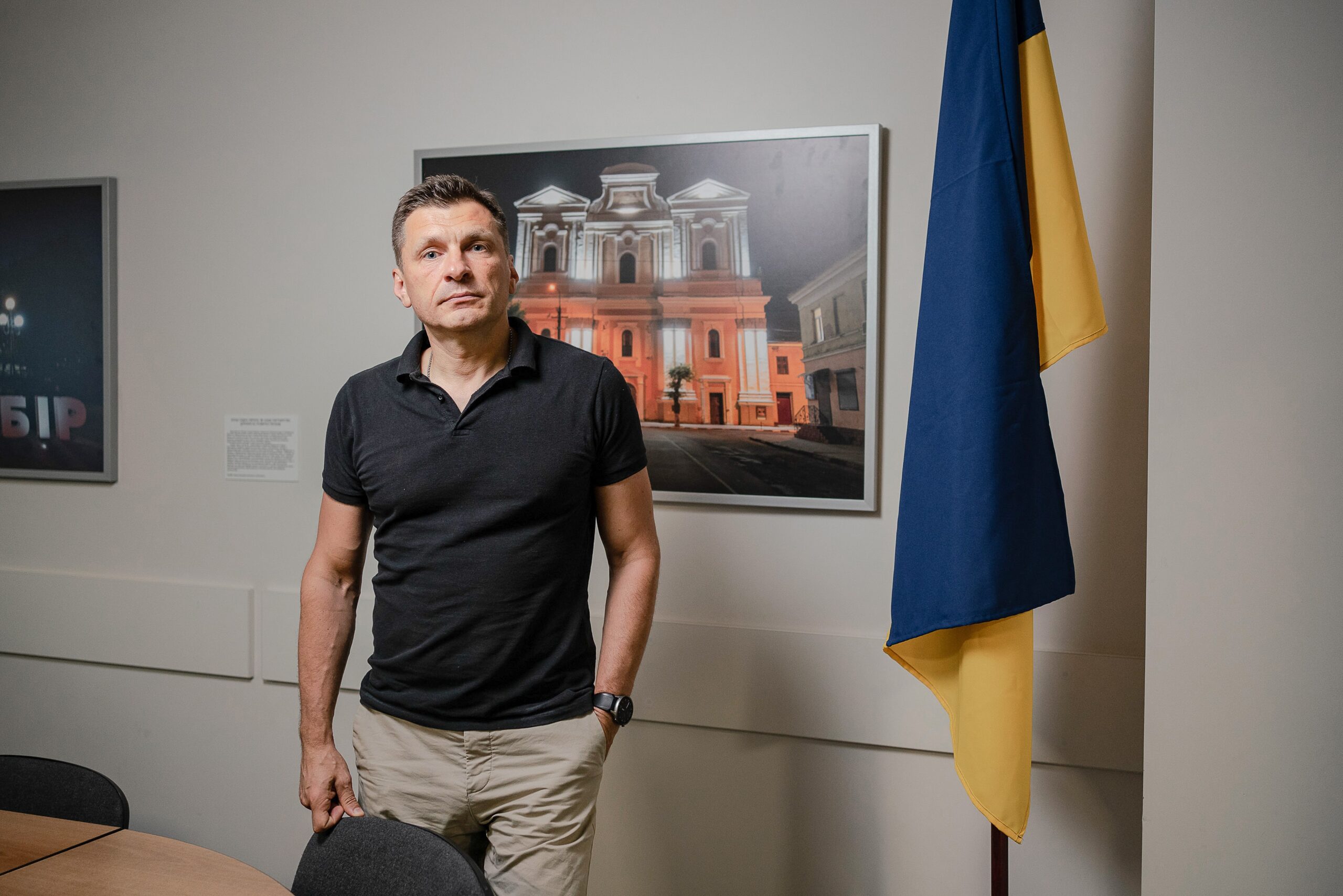
Do you personally have a goal that you want to achieve to feel like “we did it
for a reason”? What for you is an achievement, a success?
There is a pragmatic goal because I live in a country that is in a difficult situation. When I help the country, I also feel better, I feel safer, more successful, and have more opportunities.
Perhaps a more idealistic goal is that I want the whole world to be proud of our country. We have to become the best version of ourselves and improve as much as possible every day. I understand that this is very difficult in wartime, but there is no other way. I want people to be proud of the Ukraine they know.
I recently attended an Aspen seminar where philosophical discussions about leadership were held. A task was set to write down a life goal, but it would be determined at the moment of your death. So I wrote my own epitaph: “He lived a vibrant life, and he died happily because he worked for the good of his country”.
